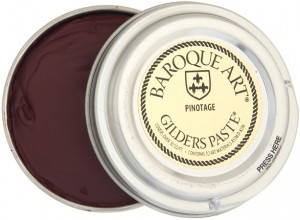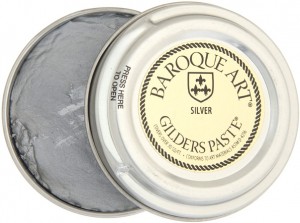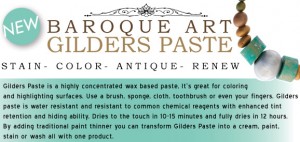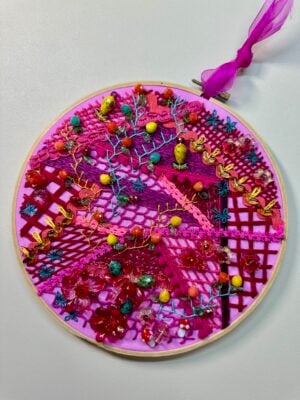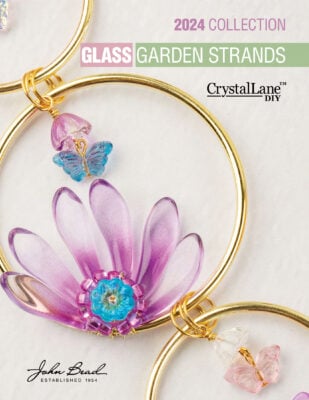 There are twelve beautiful tins of colour to look for at John Bead right now! I saw the shiny tins on the “What’s New” table as soon as I entered the building and immediately wanted to know what Gilders Paste was. It is magic! Over the next few weeks I’ll show you why Gilders Paste will become a staple in your studio, art space, store or tool box. It already occupies the best space on my work bench! Just look at a few of my favorite colours. Each prettier than the rest, I am having difficulty deciding which sample to show you first! See you tomorrow with my first demonstration: Gilders Paste on plastic/resin beads.
There are twelve beautiful tins of colour to look for at John Bead right now! I saw the shiny tins on the “What’s New” table as soon as I entered the building and immediately wanted to know what Gilders Paste was. It is magic! Over the next few weeks I’ll show you why Gilders Paste will become a staple in your studio, art space, store or tool box. It already occupies the best space on my work bench! Just look at a few of my favorite colours. Each prettier than the rest, I am having difficulty deciding which sample to show you first! See you tomorrow with my first demonstration: Gilders Paste on plastic/resin beads.
A Few Tips for Using Gilders Paste
- Substrate surface should be dry and clean, free of dirt, oil, grease and scale.
-
Baroque Art Gilders Paste can be directly applied with your finger, sponge, paint – tooth – stencil brushes, cloth, rubber stamps etc.
- All colors can be thinned out to further extend, wash, stain or paint your project.
- Blending Baroque Art Gilders Paste is as easy as mixing two or more colors to match and touch up existing color schemes or to create a custom color.
- Drying time varies depending on materials, thickness of application and substrate, approximately 30 – 60 minutes to the touch on dry, low porosity, debris free surfaces.
- Lightly buffing metallic colors, after 12 hours of drying, will produce a gilded finish.
- Will accept an over coat, such as, clear lacquer, varnish, urethane, powder coating to achieve that uniform appearance where the Gilders Paste was not used or to provide further durability to areas where repeated handling is required, such as a door knob.
- For very smooth surfaces, such as, gloss paint, plastic, ceramics and furniture, it is recommended to lightly abrade the surface with 0000 grade steel wool or fine sand paper or apply a recommended primer.
